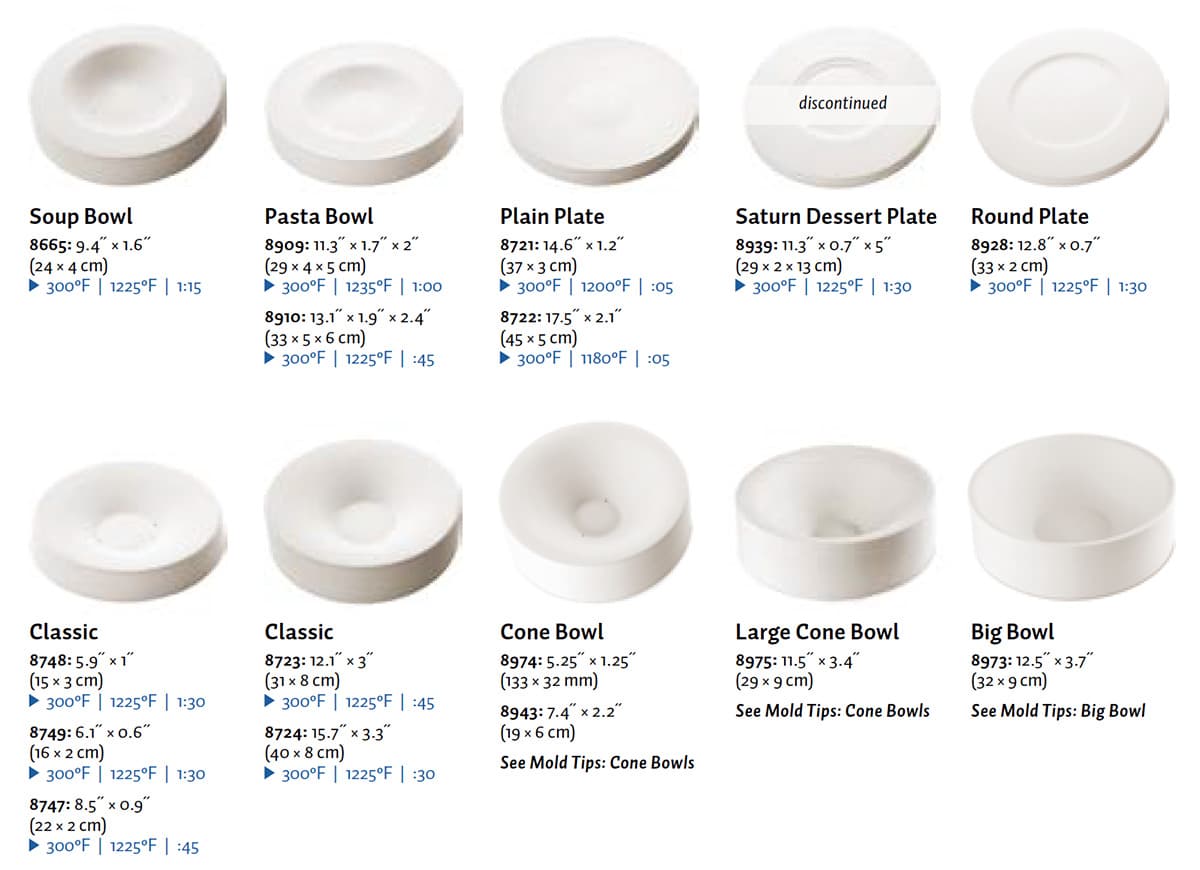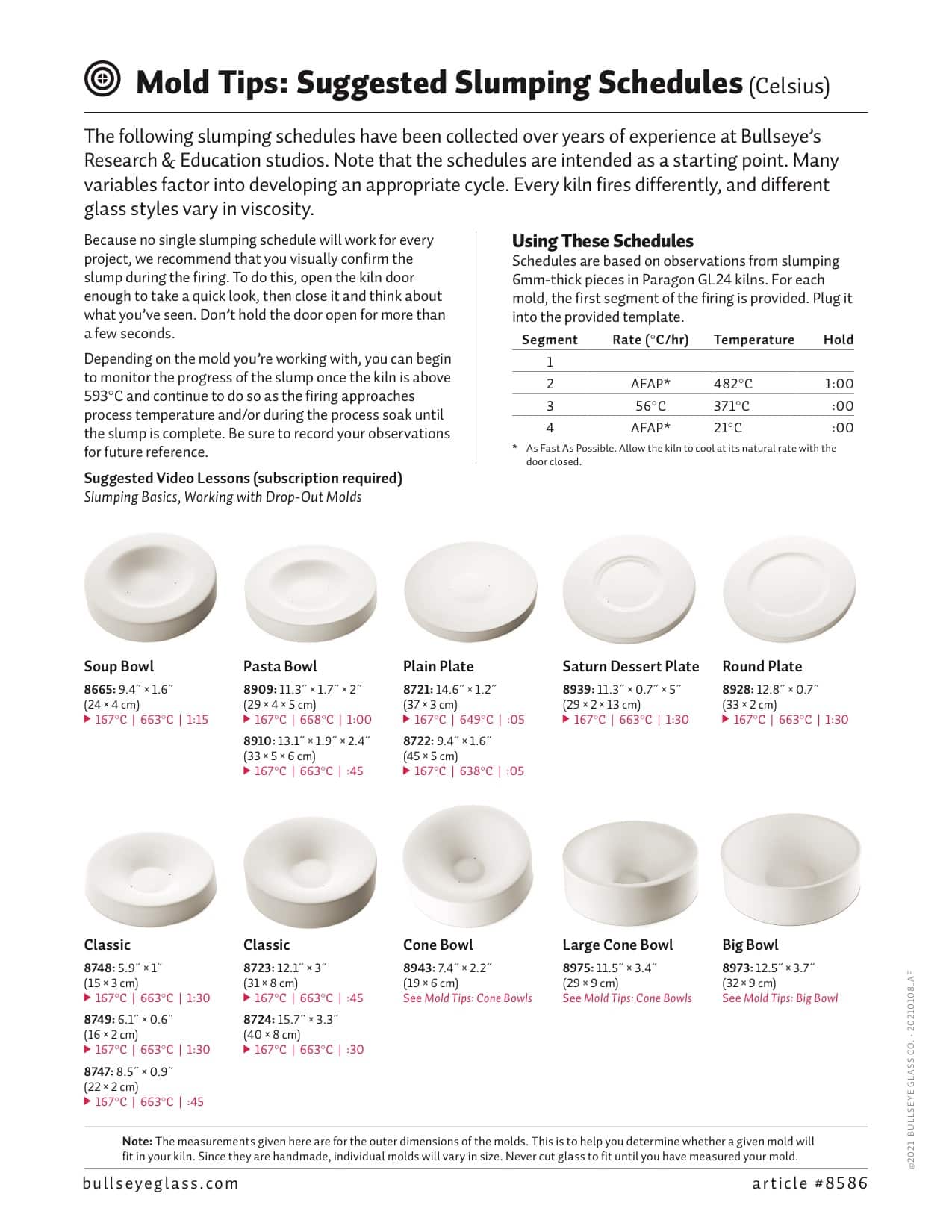Fahrenheit and Celsius
These slumping schedules have been collected over years of experience at Bullseye’s Research & Education studios. Note that the schedules are intended as a starting point. Many variables factor into developing an appropriate cycle. Every kiln fires differently, and different glass styles vary in viscosity.
Because no single slumping schedule will work for every project, we recommend that you visually confirm the slump during the firing. To do this, open the kiln door enough to take a quick look. Don’t hold the door open for more than a few seconds.
Depending on the mold you’re working with, you can begin to monitor the progress of the slump once the kiln is above 1100 °F / 593 ºC and continue to do so as the firing approaches process temperature and/or during the process soak until the slump is complete.


